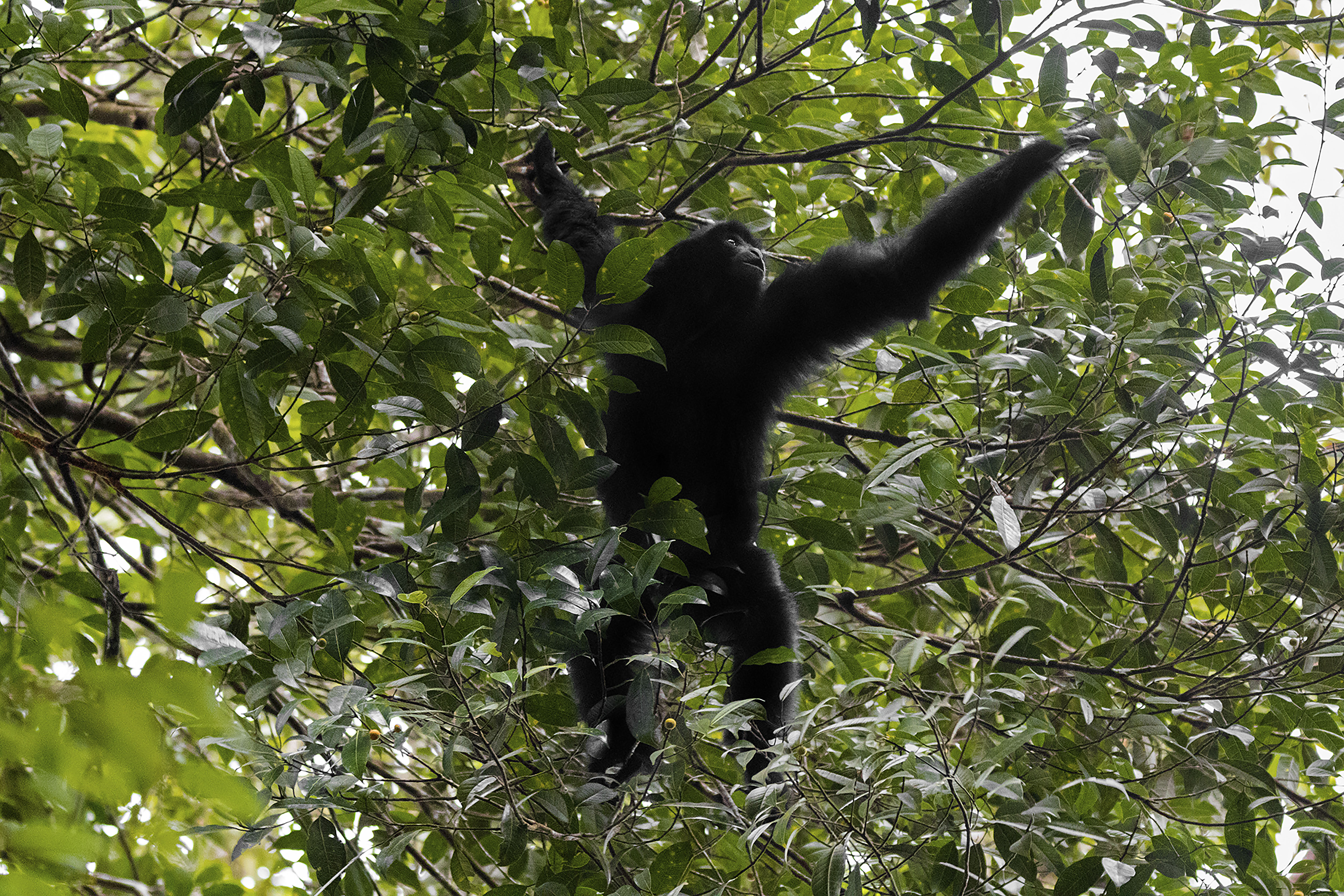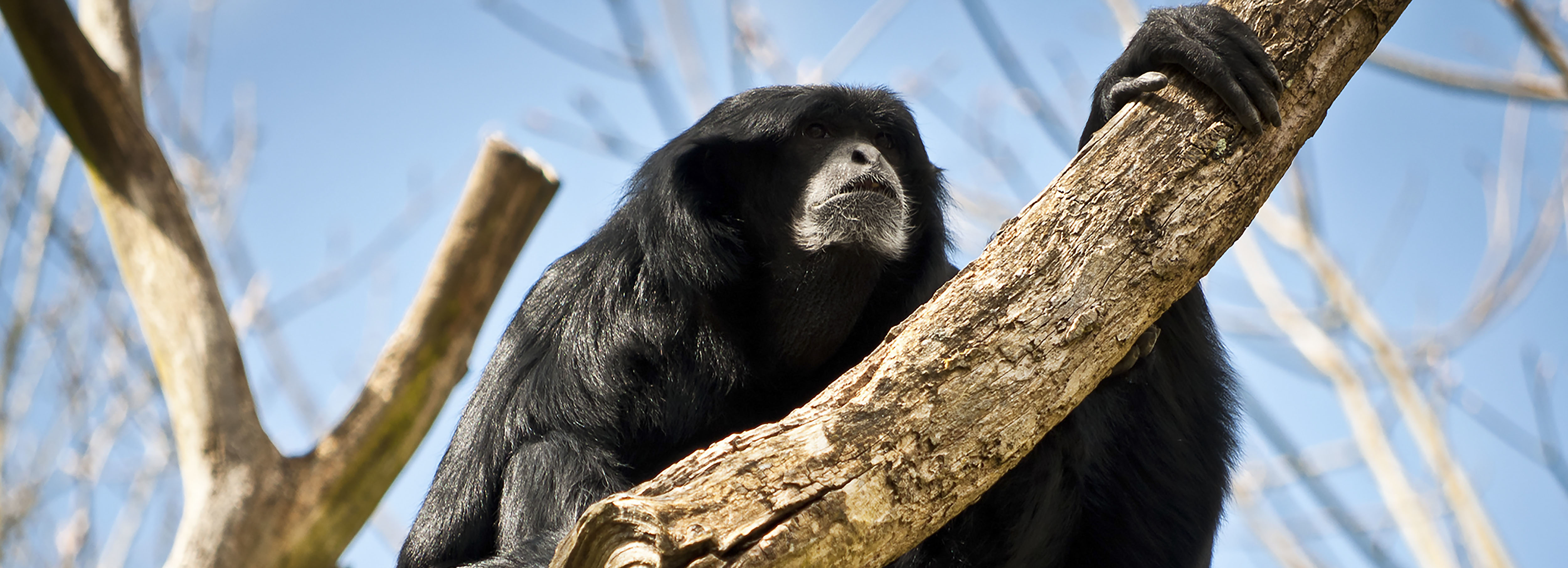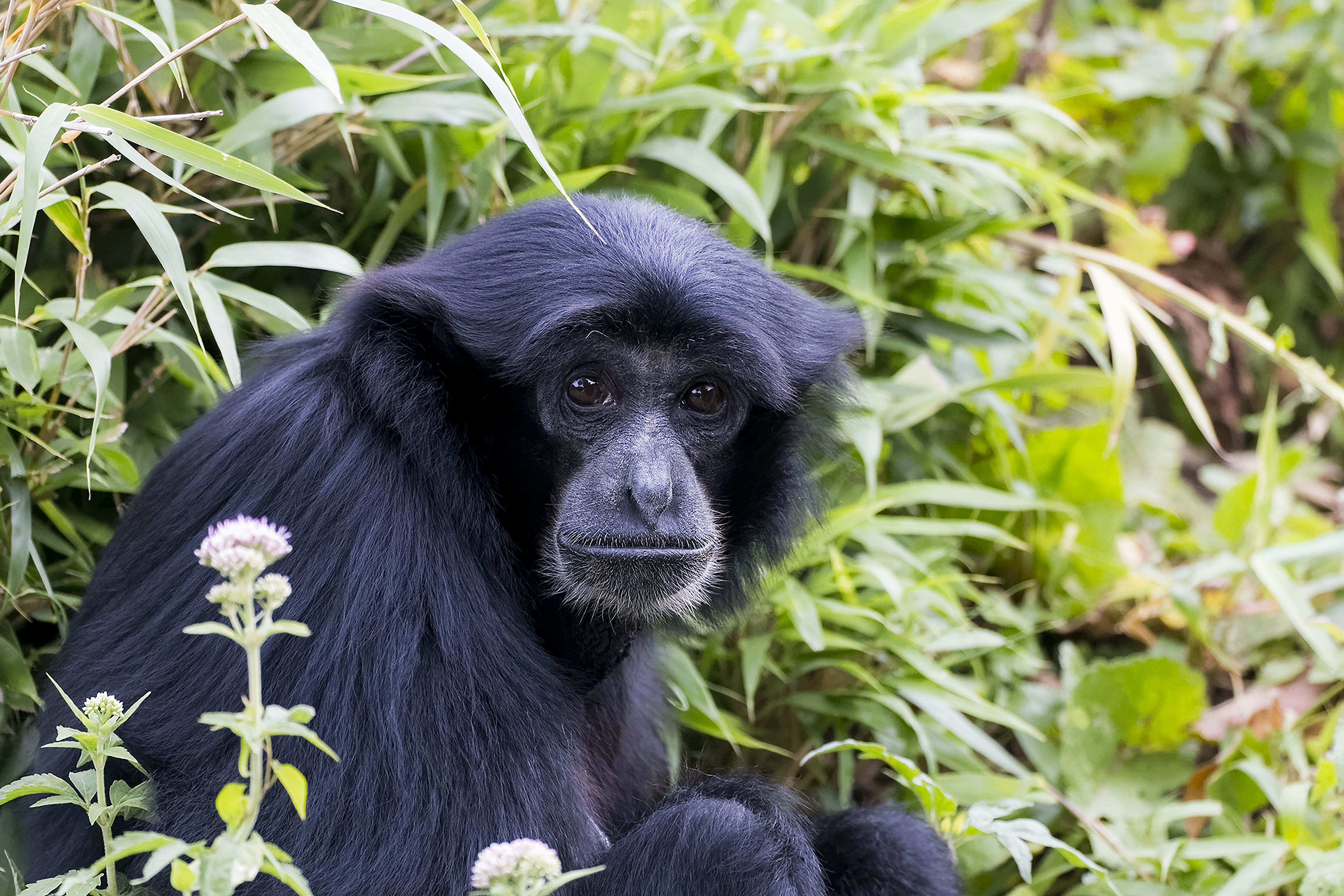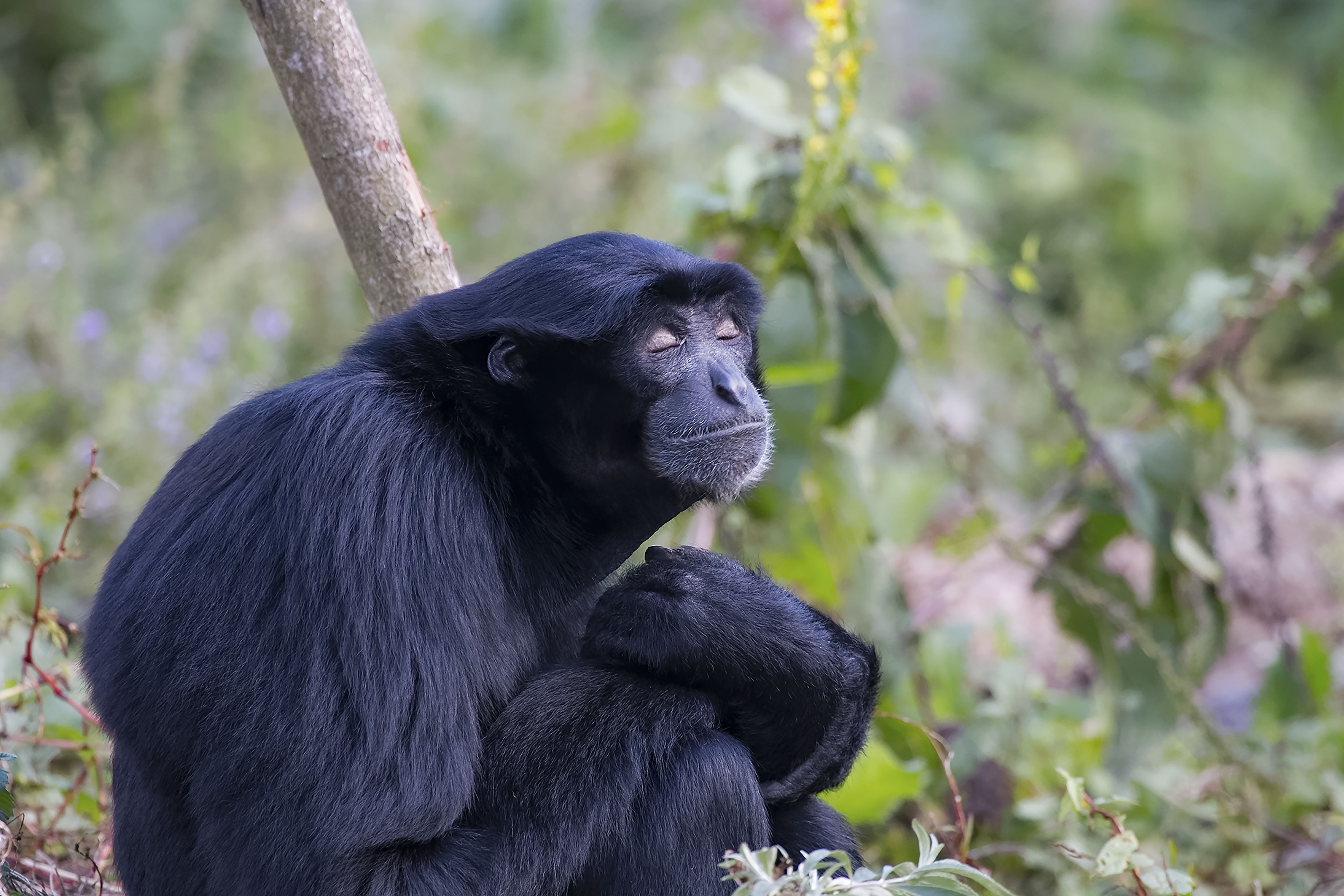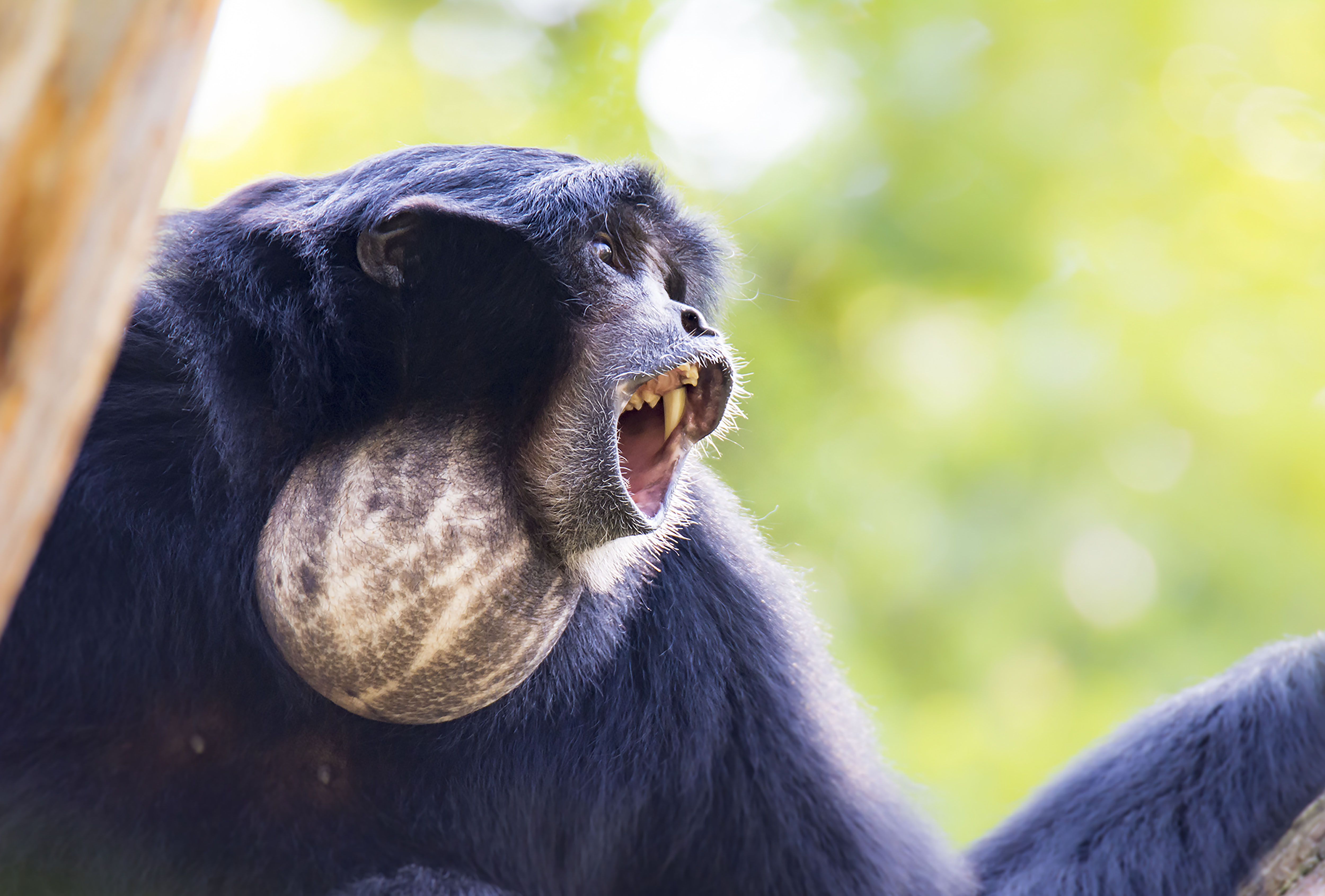Siamang
(Symphalangus syndactylus)
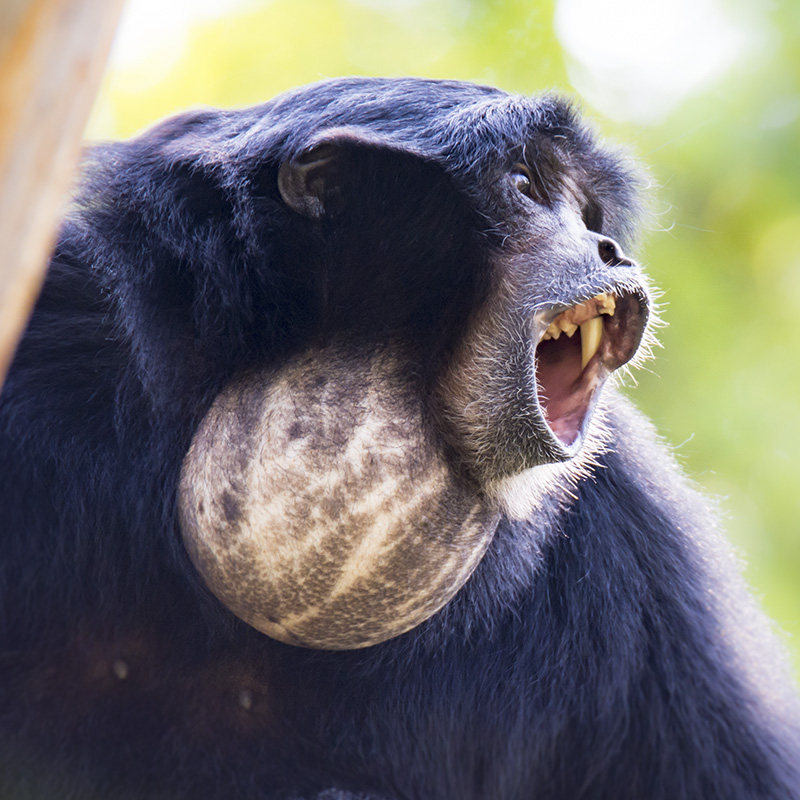
Sumatran Islands
Lowland and Montane Forests
STATISTICS
Weight up to
12 kgs
Lifespan
<44 years
Territorial - Opposable Thumbs - Swings through the Trees with Ease - Social Grooming - Monogamous
The Siamang spends most of its time in the mid-upper canopy of its forest home. It is the largest of the Gibbons and has long canine teeth, opposable thumbs, and a toe separate from its foot. It is recognizable by its huge throat sac that is used to amplify its vocalizations. This species is monogamous. The gestation period is 235 days, and the female gives birth every 2-3 years.
The Siamang is highly territorial, and the male and female mark their territory by singing a loud duet starting with dull deep tones and ending in high pitched laughter. The male swings through the trees during the song. This species moves acrobatically through the trees using only their arms in a process called brachiation. Males will confront intruders while females retreat.
The Siamang wakes at dawn to perform its song and then sets out in search of food. The Siamang eats mostly leaves and fruit but is also known to eat insects, eggs and small vertebrates. It consumes more leaves than any other gibbon. After a full day, it returns to its sleeping place. Grooming is an essential part of socialising for this species, and adults will groom for 15 minutes per day. The more dominant individual receives the most grooming.
BIODIVERSITY BENEFIT
Seed Dispersal
THREATS
Habitat Loss
Due to logging, road development, and conversion to agriculture.
Illegal Wildlife Trade
Heavily traded for illegal pet trade.
PROTECT THE WILDARK 100
